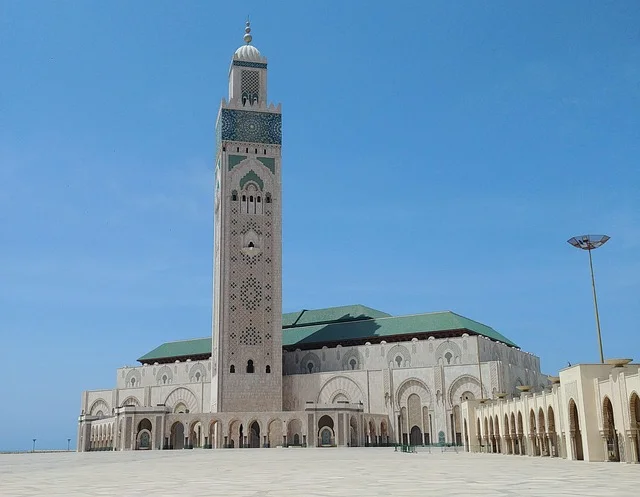Real-Time BNB Signal Analytics
Real-Time BNB Signal Analytics
Casablanca's Airport Expansion: A Billion-Dollar Bet on Moroccan Ambition or Just Another Infrastructure Boondoggle?
Morocco is betting big on its aviation sector. A cool $1 billion—or MAD 10 billion, if you prefer the local currency—is earmarked for a new terminal at Casablanca’s Mohammed V International Airport. This isn't just some minor upgrade; the National Airports Office (ONDA) is calling it one of the largest construction operations in its history, a flagship project of the "Airports 2030" strategy. The goal? To more than double airport capacity to 80 million passengers by 2030.
The new terminal, H-shaped and sprawling across 600,000 square meters, promises an initial capacity of 20 million passengers, expandable to 30 million. We're talking optimal solutions for baggage handling, passenger circulation, and boarding bridge utilization. Site preparation, already 40% complete, was awarded to STAM. The design, a collaboration between Ala Concept, RSHP Architects, and Egis Bâtiment International, prioritizes innovation, ergonomics, and operational efficiency.
But here’s where the questions begin. Can Morocco actually fill those seats? Royal Air Maroc plans to quadruple its fleet to nearly 200 aircraft by 2030. That's aggressive growth. Are they accounting for potential economic downturns, geopolitical instability, or even just plain old shifting consumer preferences? It feels like they are building it and hoping people will come.
According to the International Air Transport Association (IATA), aviation contributes MAD 112 billion ($11.2 billion) to Morocco’s GDP and supports 856,000 jobs, representing 7.9% of the country’s economy. These are impressive numbers. But let's dig a little deeper. How sensitive is that contribution to fluctuations in tourism, trade, or even fuel prices? The article doesn't say. I've looked at hundreds of these reports, and the lack of sensitivity analysis is troubling.

The project also aims to position Casablanca as an international air hub, connecting directly to the future high-speed rail line linking Tangier and Marrakech. This is a smart move, potentially cutting travel times significantly (Marrakech in 50 minutes, Tangier in 90). But what about the cost of those rail tickets? Will they be accessible to the average Moroccan citizen, or primarily geared towards tourists and business travelers?
Here's the part of the report I find genuinely puzzling: the article mentions a French Priest Accused of Abusing Underage Refugees in Casablanca. What is the link between this story and airport expansion? Is there an underlying issue of social vulnerability that the increased tourism could exacerbate? It's a jarring juxtaposition that raises more questions than answers.
The overall "Airports 2030" vision represents a MAD 28 billion ($2.8 billion) investment program. A significant chunk of that—MAD 38 billion ($3.8 billion), to be exact—is earmarked for upgrading airports and boosting the aviation sector. The article mentions that these enhancements align with preparations for Morocco’s co-hosting of the 2030 World Cup alongside Spain and Portugal. That's a convenient excuse, but the aviation expansion efforts will extend beyond World Cup host cities to neighboring areas, promoting economic development and social cohesion throughout the country. They are using the World Cup to justify an economic plan.
The Moroccan security source cited by Israeli media said that an Israeli national with criminal record detained at Casablanca Airport after reentry attempt. The source said that the individual was immediately arrested. It is a strange inclusion into an article about airport expansion.
Morocco is clearly aiming for the skies, literally and figuratively. But this billion-dollar bet hinges on a lot of assumptions. If all goes according to plan, Casablanca could become a major international air hub, boosting the economy and creating jobs. But if tourism falters, fuel prices spike, or the high-speed rail proves too expensive for locals, this could easily turn into an overblown infrastructure project that burdens the Moroccan economy for years to come. It's a high-risk, high-reward gamble.